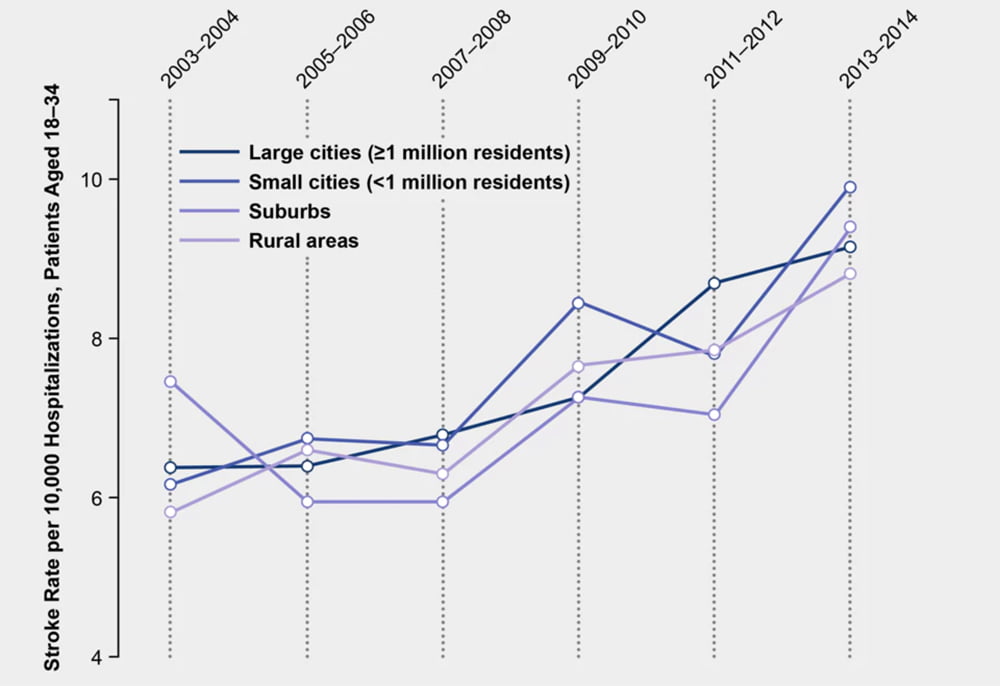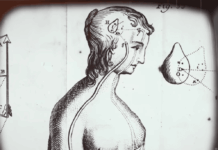
A stroke is a medical condition in which poor blood flow to the brain results in cell death and part of the brain not functioning properly. There are two main types of stroke:
- Ischemic, due to lack of blood flow typically caused by blockage of a blood vessel.
- Hemorrhagic, due to bleeding either directly into the brain or into the space between the brain’s membranes.
In 2015, stroke was the second most frequent cause of death after coronary artery disease, accounting for 6.3 million deaths worldwide (11% of the total). About half of people who have had a stroke live less than one year.
Signs and symptoms of a stroke may include an inability to move or feel on one side of the body, problems understanding or speaking, dizziness, loss of vision to one side, or a severe headache. When that happens, get medical help immediately.
The risk factors for stroke are high blood pressure, tobacco smoking, obesity, high blood cholesterol, diabetes mellitus, a previous stroke, and atrial fibrillation.
Strokes affect mainly older people, not the young. Overall, two thirds of strokes occurred in those over 65 years old. But more U.S. millennials — young adults 18 to 34 years old — are getting strokes.
In a study published earlier this year in JAMA Neurology, researchers at the U.S. Centers for Disease Control and Prevention (CDC) found that strokes among millennials increased from 2003 to 2012 by 32% for women and 15% for men.
Ralph Sacco, president of the American Academy of Neurology, remarked that although the evidence suggests that the overall incidence and mortality of stroke is on the decline, the rates may be increasing among younger populations: “The reasons for these trends are not entirely clear,” but there are concerns about obesity, diabetes, physical inactivity, and drug use “having a greater impact in younger stroke victims.” (PBS)
Scientific American conducted a further study of strokes among millennials, using data from the U.S. Department of Health and Human Services’ Agency for Healthcare Research and Quality (AHRQ).
Here are the study’s findings:
- Confirmation of earlier studies that pointed to nationwide increases in strokes among millennials.
- Statistically significant regional differences in millennials’ stroke rates (2003 to 2012):
- 70% increase in the West as a region; 85% increase in western cities with more than one million residents.
- 34% increase in the Midwest.
- The higher stroke rates in the West and Midwest were not due to better brain-scanning technology and improvements in stroke detection.
- The study concludes that drug use and racial disparities (blacks have more strokes than whites) may be factors.
Mitchell Elkind, a stroke expert at Columbia University and New York–Presbyterian Hospital who reviewed the Scientific American study, points out the troubling implications of increasing numbers of millennials having strokes:
- In the short term, severe strokes among younger adults are a big problem because disability in people in their peak earning years can severely impact their families and future lives.
- Longer-term, more strokes—even relatively mild ones—among younger adults are worrying because they portend an upcoming epidemic of worse attacks in another 30 years. Not only are stroke risk factors such as obesity and smoking cumulative over time, second strokes are more likely to be stronger and potentially fatal. Elkind said: “We are just seeing those little waves hitting the beach now but that tsunami will come in the future.”
~By Dr. Eowyn
Disclaimer: We at Prepare for Change (PFC) bring you information that is not offered by the mainstream news, and therefore may seem controversial. The opinions, views, statements, and/or information we present are not necessarily promoted, endorsed, espoused, or agreed to by Prepare for Change, its leadership Council, members, those who work with PFC, or those who read its content. However, they are hopefully provocative. Please use discernment! Use logical thinking, your own intuition and your own connection with Source, Spirit and Natural Laws to help you determine what is true and what is not. By sharing information and seeding dialogue, it is our goal to raise consciousness and awareness of higher truths to free us from enslavement of the matrix in this material realm.
 EN
EN FR
FR



























What is the impact of hormonal birth control methods in this population (compared to previous generations)?